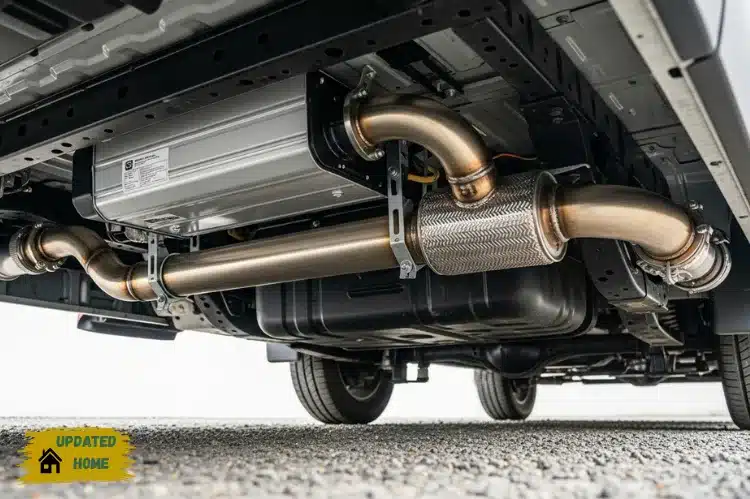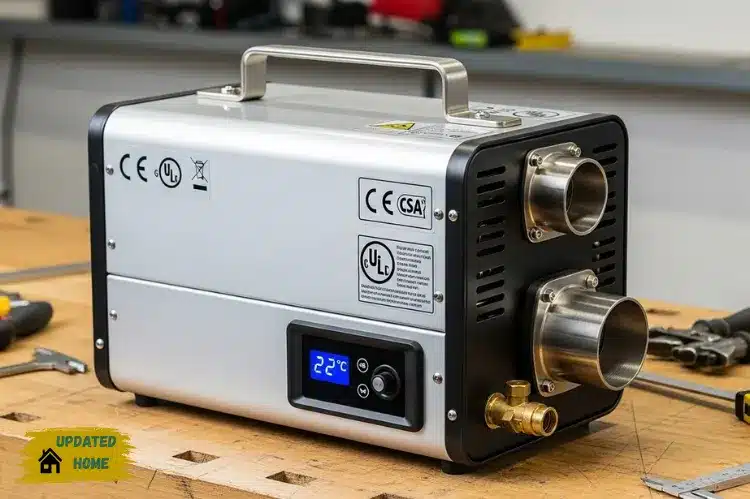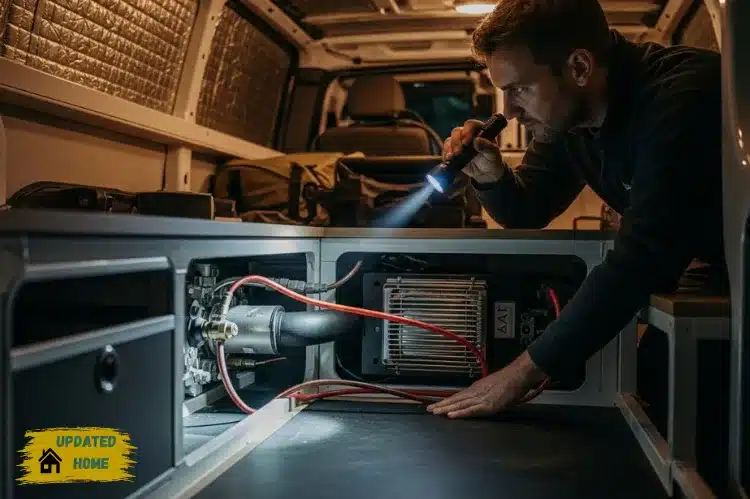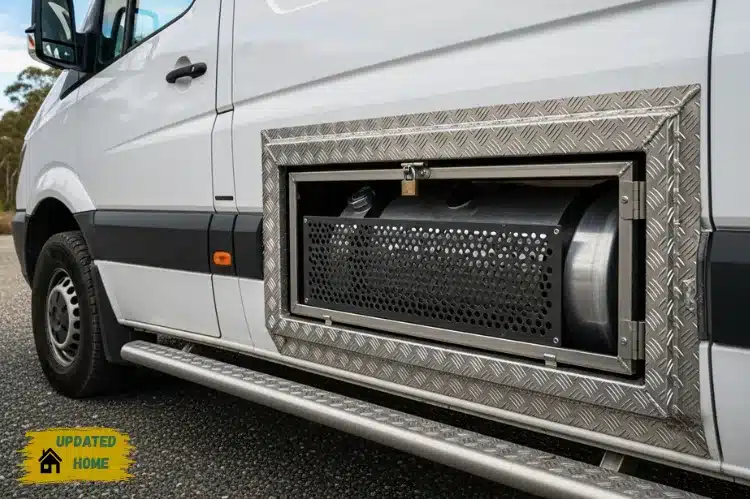Staying warm inside a van during cold nights matters for both comfort and safety. Diesel heaters offer steady heat without draining much battery power, which makes them a common choice for van owners. However, safety depends on more than just turning on the heater—it starts with how it is installed, maintained, and monitored.
A diesel heater is safe for vans only when it prevents harmful fumes, avoids fuel leaks, and keeps the air inside clean. The right setup uses proper ventilation, quality parts, and smart placement to reduce risks. Each of these factors works together to create a safe and warm space that supports travel in any season.
Table of Contents
Proper installation with sealed exhaust to prevent fumes inside the van
A safe diesel heater setup depends on how well the exhaust system seals to the van’s floor and exits outside. A tight seal keeps exhaust gases from leaking into the cabin. Any gaps between the heater outlet, exhaust pipe, or muffler joint can let fumes enter the van, which can be dangerous.
Installers should mount the heater base flush to the floor and use heat-resistant sealant around all joints. The exhaust pipe must route directly outside, away from windows or vents. A metal fitting through the floor or wall helps protect the vehicle’s surface from heat.
A well-installed system also supports steady temperature control. An adjustable thermostat diesel heater lets users manage heat levels without overworking the unit. This setup reduces fuel waste and keeps the air inside fresh and safe.
Regular inspection of the exhaust and seals helps detect cracks or corrosion early. Proper maintenance prevents leaks and keeps the heater performing safely through every season.
Use of high-quality diesel heater models with safety certifications
A safe diesel heater for van use depends on the quality of its build and the safety standards it meets. High-quality models use durable metals and well-sealed components that reduce the risk of leaks or overheating. These materials also help the heater last longer under frequent use.
Safety certifications show that a heater meets international or regional safety rules. Certified models pass inspections for electrical safety, emissions, and temperature control. These checks confirm that the heater can operate safely in enclosed spaces like vans.
Features such as automatic shutoff, flame sensors, and overheat protection add another layer of safety. They help prevent accidents caused by fuel or electrical faults.
Consumers should look for clear certification labels before purchase. A certified, high-quality diesel heater offers steady heat and peace of mind during travel or cold-weather camping.
Regular maintenance to check for fuel leaks and carbon monoxide
A diesel heater in a van must stay in good condition to operate safely. Regular maintenance helps detect small issues before they become serious. A quick inspection of the fuel system can reveal loose fittings or cracks that may cause leaks.
Fuel leaks, waste diesel, and create fire hazards. Therefore, owners should check hoses, clamps, and connections for any damp spots or fuel odor. If a leak appears, it should be repaired immediately to prevent damage or risk to passengers.
Carbon monoxide poses another danger. Diesel heaters produce this gas during combustion, so proper ventilation and exhaust function are important A blocked vent or damaged exhaust pipe can allow gas to enter the cabin.
Technicians recommend checking the exhaust outlet and air intake for dirt or corrosion. Installing a carbon monoxide detector adds another layer of protection. Regular service by a qualified professional helps maintain safe operation and peace of mind.
Placement of the diesel fuel tank outside or in a ventilated compartment
A diesel heater works more safely when its fuel tank sits outside the main cabin or inside a well-ventilated compartment. This setup keeps fuel vapors from building up in enclosed areas and reduces the chance of fire or fumes entering the living space.
Regulations state that tanks should not be in spaces where the heat may rise above 150°F. Heat can cause pressure inside the tank, which increases the risk of leaks or vapor release. Placing the tank in a cooler, open area helps maintain stable conditions.
A ventilated metal compartment can also serve as a safe option. It should allow airflow while keeping the tank secure and protected from damage. Proper ventilation prevents fuel odors and supports clean combustion for the heater.
The tank should rest on a firm, level surface away from ignition sources. Clear labeling and easy access for refueling or inspection help maintain safety and compliance with fuel storage standards.
Incorporation of carbon monoxide and smoke detectors inside the van
A safe van setup includes both carbon monoxide and smoke detectors. These devices alert occupants to gases or smoke that could build up in a small space. A diesel heater may have a sealed combustion chamber, yet leaks or exhaust faults can still allow dangerous gases to enter.
Detectors designed for vehicles handle vibration, temperature changes, and limited airflow better than home models. They can be mounted on walls or ceilings, depending on the manufacturer’s directions. Proper placement helps the sensors detect hazards quickly.
A carbon monoxide detector should sit near sleeping or sitting areas since the gas has no odor or color. A smoke detector fits best near the ceiling, away from vents or cooking spots. Both should have test buttons and clear expiration dates.
Regular testing and timely replacement keep the system dependable. Therefore, a small investment in these detectors adds an important layer of safety to any diesel-heated van.
Conclusion
A safe diesel heater for vans depends on proper installation, quality materials, and regular maintenance. The unit must vent exhaust gases outside the vehicle to prevent carbon monoxide buildup. A carbon monoxide detector adds an extra layer of safety.
Heaters made with durable parts and certified for mobile use tend to perform more safely. They should include automatic shut-off features to stop operation if fuel or temperature levels become unsafe.
Owners should inspect vents, fuel lines, and filters often. Any smell of diesel or visible smoke signals a problem that needs prompt attention.
By following safety guidelines and using the right equipment, van owners can heat their space efficiently without risking their health.





